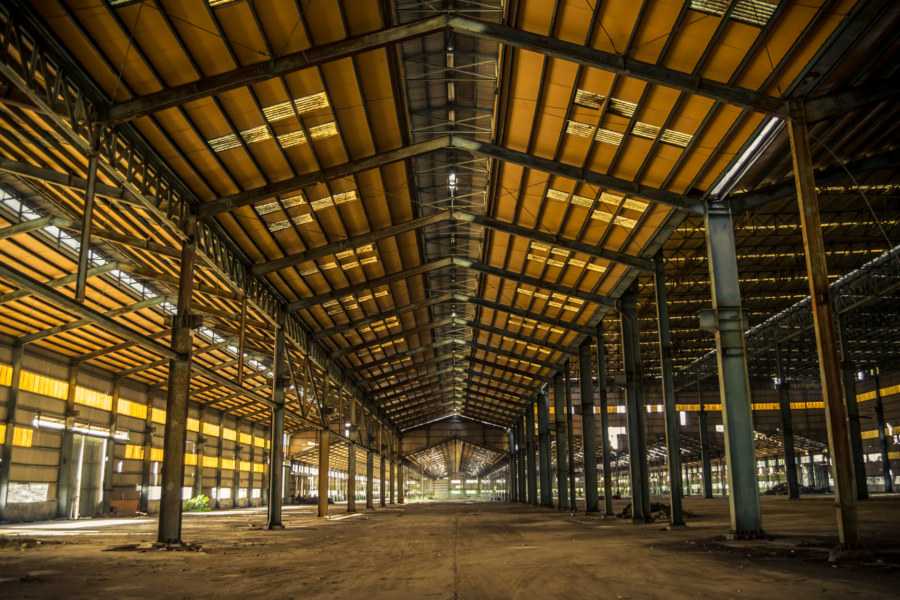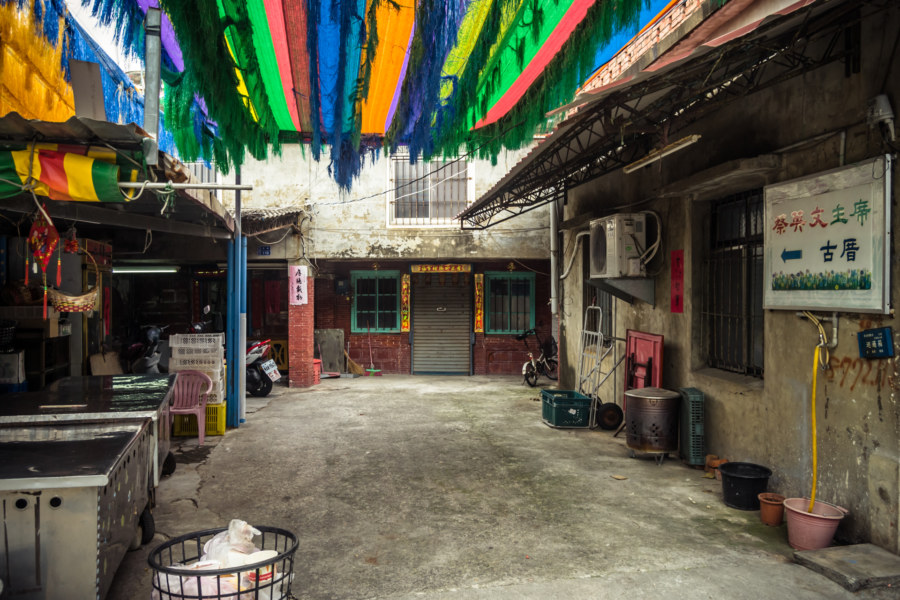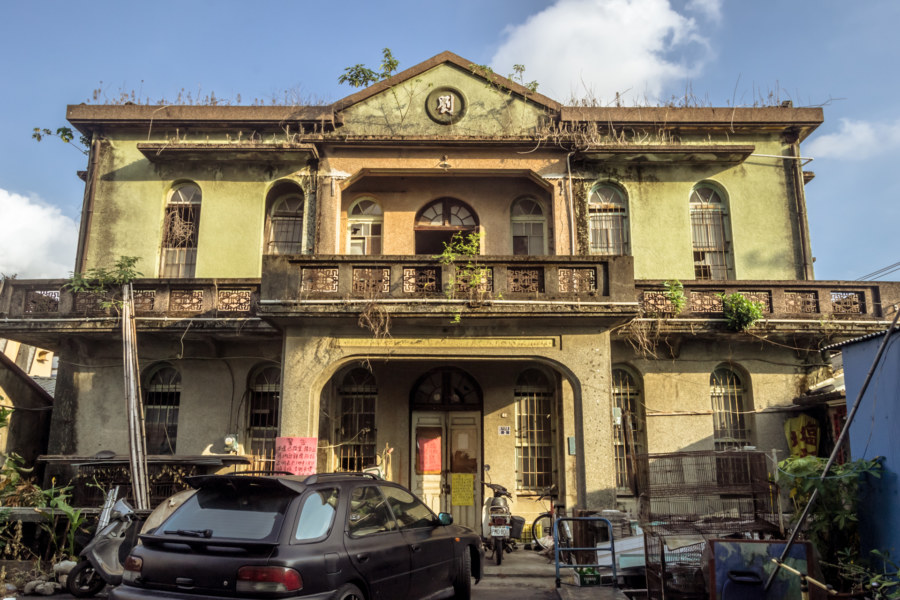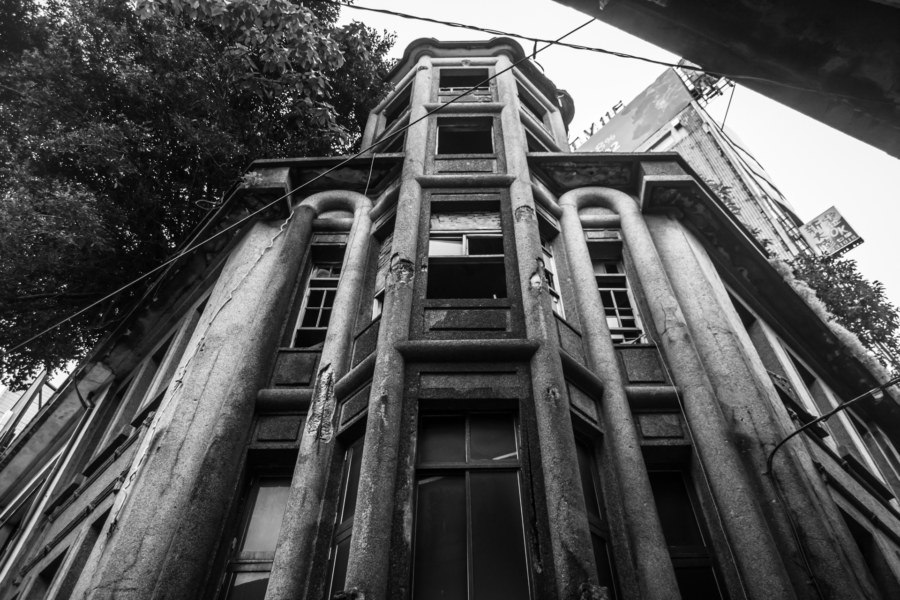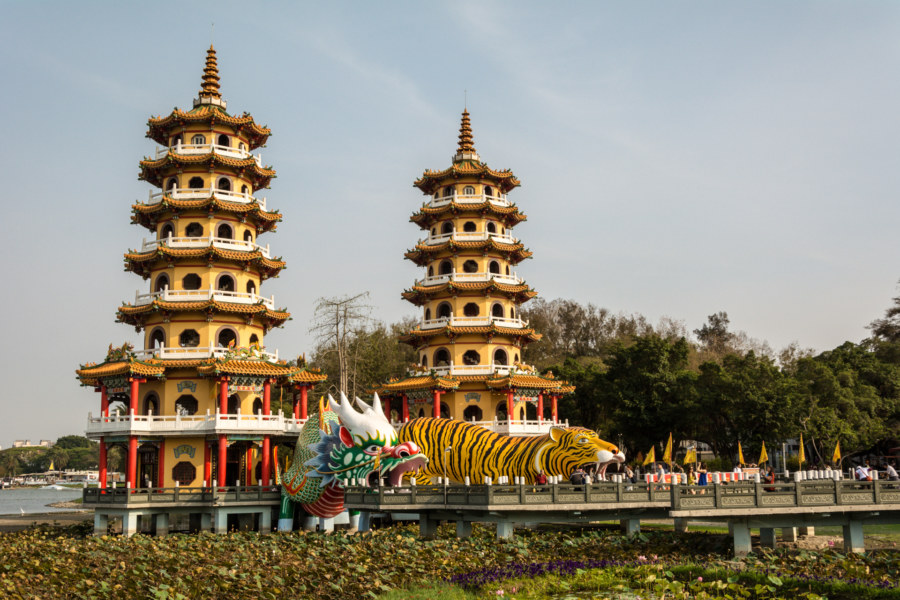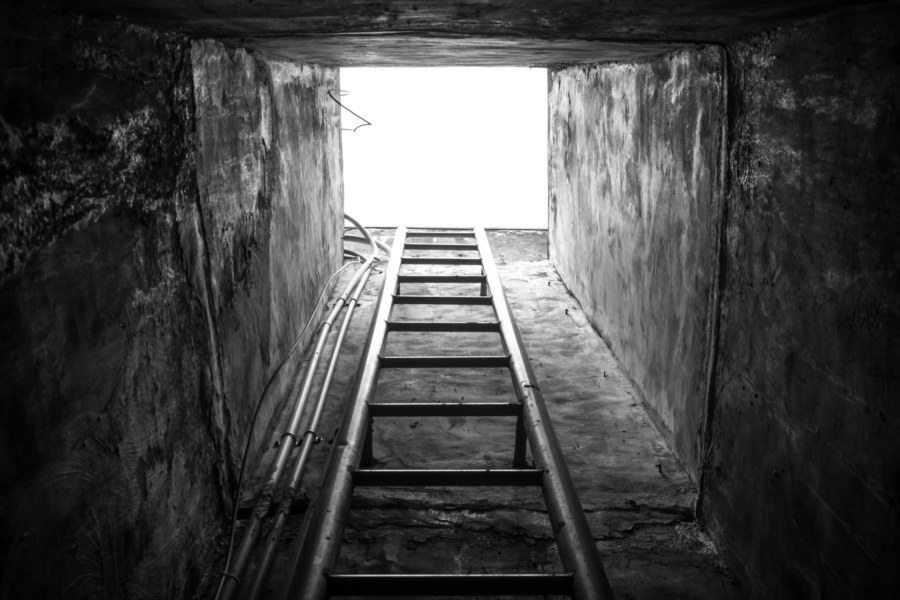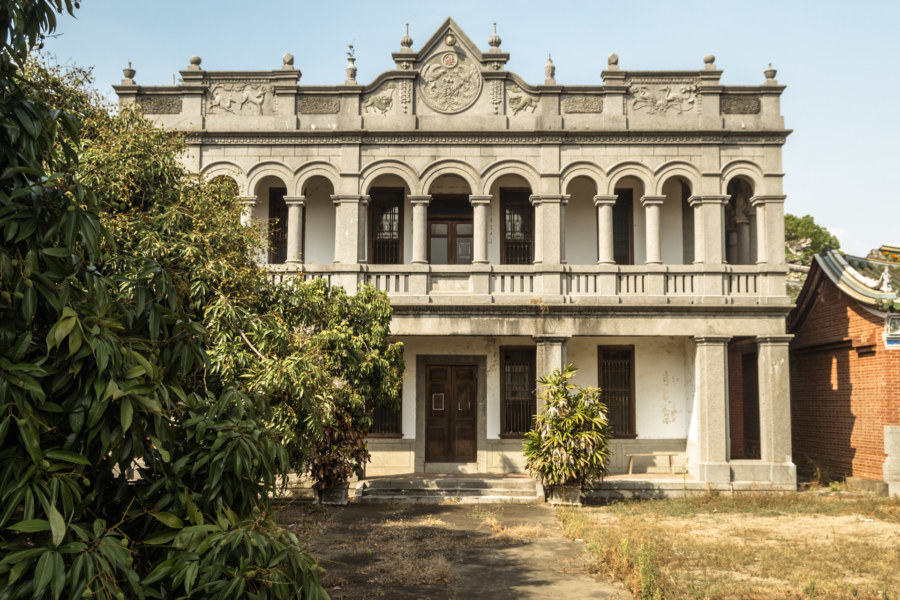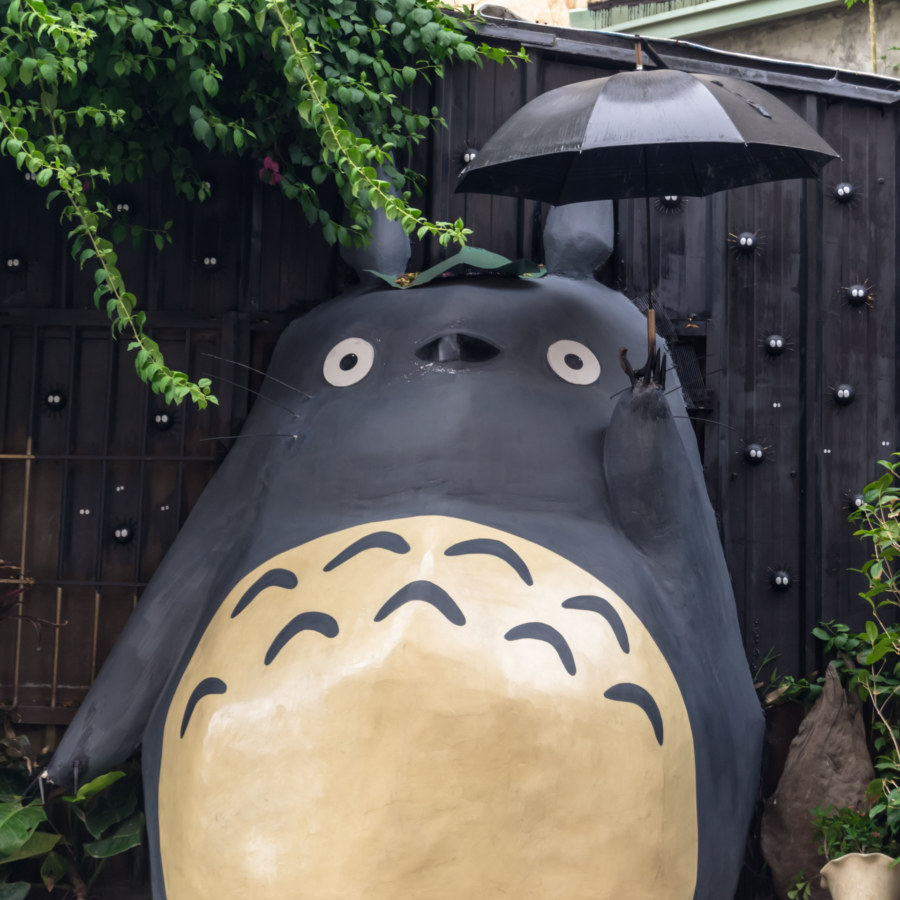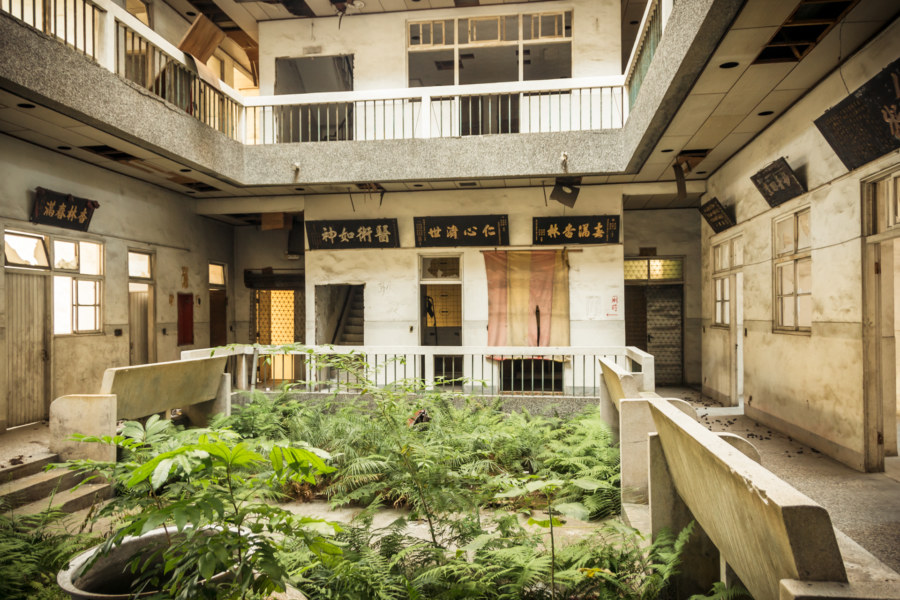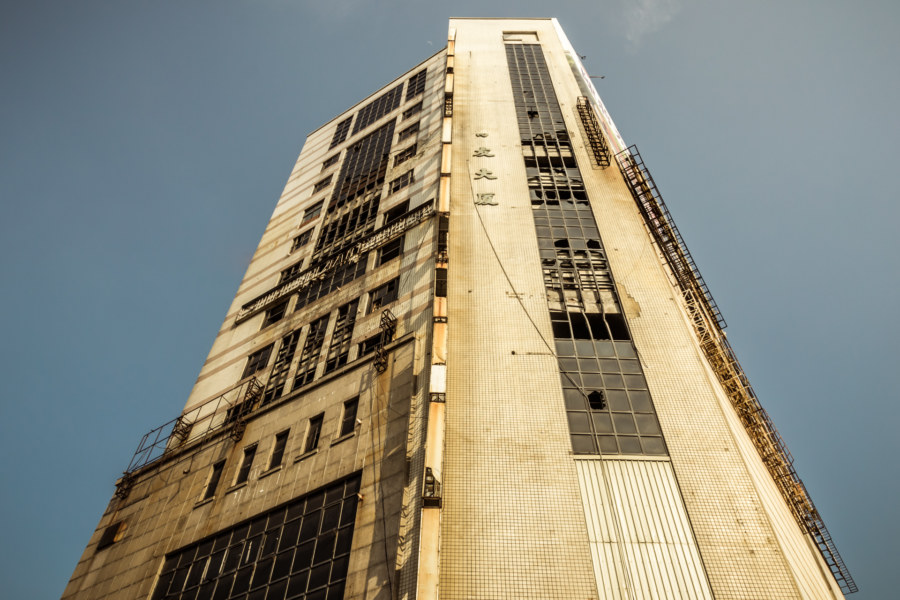The massive ruins of the Yǔtián Automotive Factory 羽田汽車工廠 are located on the Dayeh University campus in Dacun, Changhua. There are four main buildings, each approximately 360 meters in length and 90 meters across for an estimated total of 32,500 square meters apiece. Outside of the Changhua Coastal Industrial Park 彰化濱海工業區 in Lukang (which opened in 1995) these buildings are probably the largest in the county—and the entire complex is readily visible from space.
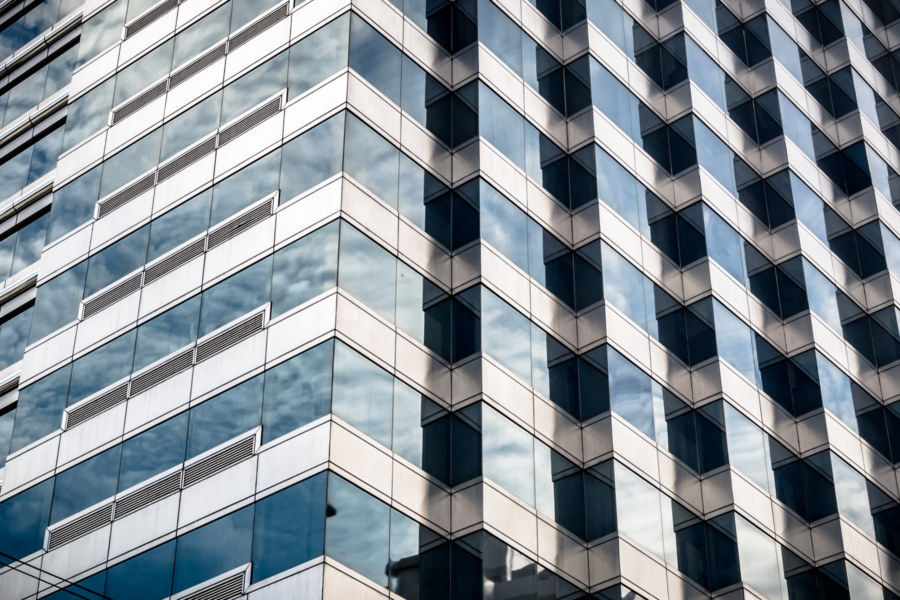
Structures fit for habitation and use. See also: urbanism, commercial, industrial, residential.
Subterms
Adjacent Terms
Tsai Ing-wen Old House 蔡英文古厝
Tsai Ing-wen’s childhood home in the village of Fenggang.
One of the more unexpected finds on my recent bicycle tour through the deep south of Taiwan was the childhood home of Tsai Ing-wen 蔡英文 (pinyin: Cài Yīngwén), current chairman of the Democratic Progressive Party and presidential contender in the upcoming 2016 general election. I was vaguely aware that she was born in Fangshan in Pingtung, the southernmost county in the nation, but hadn’t known any more than that prior to taking a short detour through the old fishing village of Fēnggǎng 楓港, founded in 1765 according to Chinese language Wikipedia. Imagine my surprise when I saw a small sign on the main road through town that directed me to Chairman Tsai Ing-wen Historic Home 蔡英文主席古厝!
When I arrived the courtyard was initially littered with trash. Several locals noticed my arrival and one quickly went to fetch a broom and clean up. I made what little conversation I could manage, not even knowing if my Mandarin was understood, and…
Chaozhou Liu House 潮州劉厝
I noticed this old-fashioned western-style mansion on the outskirts of Chaozhou in Pingtung while cycling through the deep south of Taiwan in 2015. In a sea of ugly metal shacks and bland concrete apartment blocks it is a rare pleasure to encounter a building like this one. I also enjoy the challenge of trying to learn something of the history of such places. Usually with some knowledge of the local area and the family name on the facade I can piece something together from blogs and government records—but this time I’m stumped, and I’m not the only one. Just about all that is known for certain is the name, Liu House 劉厝, which came up in some real estate records. Based on my growing familiarity with Japanese colonial era architecture I would guess this mansion dates back to the 1930s or so.
Keelung Ghost House 基隆鬼屋
Keelung Ghost House 基隆鬼屋, formally the Línkāiqún Mansion 林開群洋樓 (and sometimes Keelung Lin Residence 基隆林宅), is one of the most famous ruins in Taiwan. Much like Minxiong Ghost House 民雄鬼屋 and Xinglin General Hospital 杏林綜合醫院, it commonly appears on lists of the most haunted places on the island. This ghostly reputation makes it difficult to separate credible information from the many tall tales that are told, particularly through the dark glass of machine translation.
Zuoying Lotus Pond 左營蓮池潭
Lotus Pond 蓮池潭 is a manmade lake in Zuoying, Kaohsiung, widely known for its quirky assortment of pagodas, pavilions, and temples. Earlier this year I made a short stop at Lotus Pond on the way to the old walled city of Zuoying a little further south. I like exploring temples in Taiwan but was mildly concerned Lotus Pond would be a bit too touristy for my liking. Turns out I had nothing to worry about; my brief tour of the southwest side of the lake was memorable and fun.
Qiaoyou Building Supplemental
Recently I posted my full exploration of the Qiaoyou Building 喬友大廈, a towering ruin in the heart of Changhua City. It was a big building and I ended up capturing many more photographs than I ended up sharing there. Here, in this post, I’d like to share a few more photos I captured in black and white. I have also included a couple of images demonstrating how I digitally restore photographic negatives I find in the ruins (a technique discussed in more detail here). If you’re curious about this building be sure to see the original post.
Yumei Hall 玉美堂
Yùměi Hall 玉美堂, also known as known as Hóng Family Mansion 洪氏洋樓, is located in Jiālǎo Village 茄荖村, a small settlement on the eastern edge of Fenyuan in Changhua, Taiwan. Built in the late 1920s when the village was administered as part of Caotun in Nantou, it is one of only a handful of “Western-style” country manors built in central Taiwan during the Japanese colonial period (see my post about Jùkuíjū 聚奎居 for another great example).
Totoro Bus Stop in Taichung
Taiwan loves Totoro, the iconic star of Miyazaki’s animated classic My Neighbor Totoro. Known locally to Chinese speakers as Duōduōlóng 多多龍 (or 豆豆龍) and—my favourite—Lóngmāo 龍貓 (literally “dragon cat”), Totoro recently appeared on the streets of Taichung alongside Chibi and Chu Totoro, numerous makkuro kurosuke (soot sprites) and No-Face (who appeared in Spirited Away). These life-sized, fan-made sculptures have drawn so much interest that the site even appears on Google Maps as Dàlǐ Totoro Bus Stop 大里龍貓公車站.
Xinglin General Hospital 杏林綜合醫院
Xìnglín General Hospital 杏林綜合醫院 is perhaps the most famous ruin in downtown Tainan, Taiwan. It opened for business in 1975 as the largest hospital in the city and catered to the burgeoning middle class during the boom times of the Taiwan Economic Miracle. In 1993 the hospital shut down after being plagued by a number of scandals involving fraudulent records, medical malpractice, and allegations of wrongful death. Ongoing legal battles and fragmented ownership have left the building abandoned and neglected since then.
Qiaoyou Building 喬友大廈
I have been living next to the magnificent ruins of the Qiáoyǒu Building 喬友大廈 in Changhua City for the last several months. Not a day goes by where I’m not walking or riding by this hulking derelict, looking up and wondering about what I might find inside. I had some general idea, of course, as I already recognized the building for what it was: one of many shopping and entertainment complexes built in central Taiwan during the economic boom of the late 1970s and early 1980s. Most of these former showpiece properties have been abandoned in the decades since, usually due to some combination of mismanagement, declining fortunes, and fire damage.
